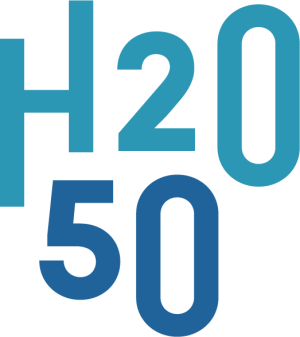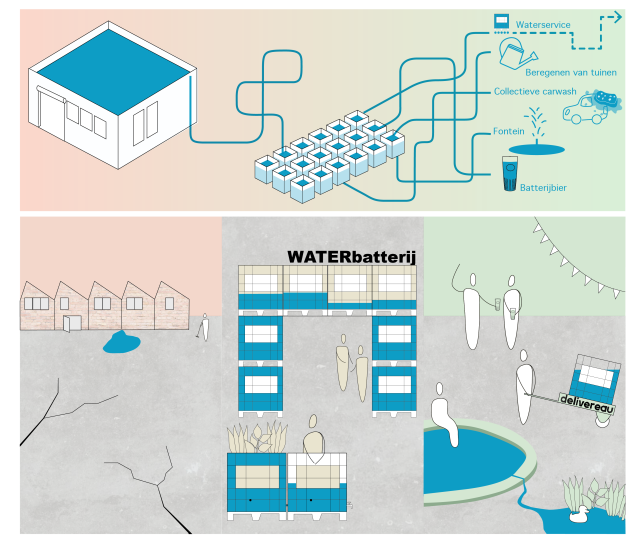In the past, we wanted to get water away from the city as quickly as possible. In recent years, cities have been increasingly embracing water. “Water in the City” projects are appearing ever more often, the discourse around green-blue networks and infrastructure is intensifying: from reopening watercourses to integrating water storage in squares and playgrounds. Citizen projects (collecting water from large roofs, using drainage water from construction sites, etc.) also mean that we are increasingly seeing the city as a sponge of and for water, and we act accordingly.
What if we go a step further and let local residents collect the rainwater in their neighbourhood and manage it together? Imagine a large “battery” of water storage facilities that collect the water from all the large roofs in the centre of the neighbourhood. What happens if you leave the management of these cubic meters to the local water knowledge of the residents and local organisations? How could they manage it in order to deploy the buffer at peak moments (let it drain and fill up at the right times)? What is the necessary expertise in this regard? What new forms of entrepreneurship would such a water battery attract? What creative ideas could develop from this at the neighbourhood level? A sustainable carwash, a network of taps with rainwater throughout the neighbourhood, a corresponding roof vegetable garden...?
In new housing estates, ideas on sustainable water use can easily be integrated, as the necessary infrastructure can be planned in advance. In existing neighbourhoods, you need to work with the existing infrastructure and the existing social network. It is therefore all the more interesting to focus our research on these existing neighbourhoods, to see what is necessary in order to store water there. Cities and neighbourhoods are constantly changing, and space is scarce. Finding a “permanent” place for a water battery will not be easy, but what if we find a system that is modular and portable? A battery that can move from one temporary empty spot to another?
In Ghent, we already found a location that we think could be eligible for a temporary experiment. In neighbourhood park De Porre (in the centre of the Moscou-Vogelhoek district) there is an old textile factory with an abandoned depot. Around the park there are 14,000 square metres of roof area on larger buildings (schools), where water can be collected in the abandoned depot. More than 10 million litres of water can be collected in the depot, in cubitainers or other forms of storage. Water is already central to the design of the park. Imagine the dynamism this water battery could bring to the neighbourhood?
Can we design a modular “water battery” that can be installed in a central spot in a neighbourhood? What would have to be put in place for a community of residents to manage it? What would be the outcome in terms of water awareness in the neighbourhood? Could it help schools with educating children in a new way on how they look at water?
1 water battery can tell a 100 stories
When you collect rainwater in a conventional cistern, the application possibilities are immediately quite limited. But say you collect rainwater from a large roof area in 100 cubitainers, then just as many applications are possible. A delivereau that waters urban plants. Or a pop-up charity car wash on the village school playground. Or providing water for the local summer camp.
The well-considered concept is ready for the taking. Who will implement it?
sdp [at] vlakwa.be (Contact water innovator Simon De Paepe for more info)
Download all catalysts
Disclaimer
The Flemish Environment Agency (VMM), De Vlaamse Waterweg, De Watergroep, Aquafin, the Flemish Department of Environment, Farys, Pidpa, water-link and VITO - Vlakwa have created the space for a group of fresh thinkers to develop a systemic view of water, and to challenge the water sector to shape a futureproof water system. The formulated ideas are not those of the initiators, nor do they represent their stands. However, they are considered valuable as an inspiration for the future of our water system.
This work is licensed under a Creative Commons Attribution 4.0 International License.

